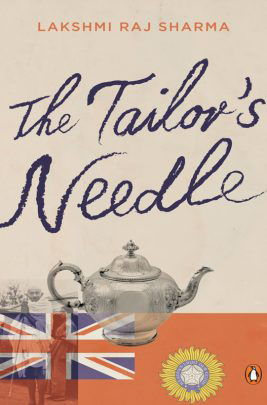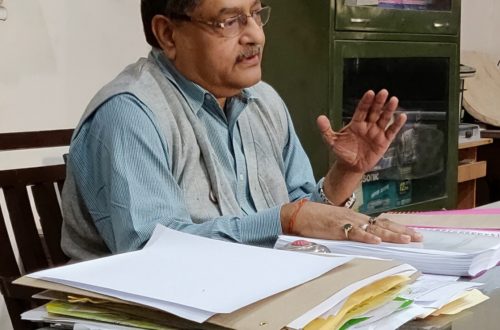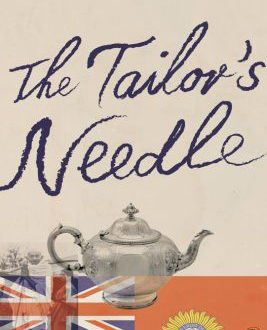
A Sequel and a Prequel
These days I am writing a sequel to my debut novel, The Tailor’s Needle, after eleven years of its publication. The publication of my first novel had a unique journey being published first in Great Britain and then by Penguin Books India. The journey of its publication has been well discussed in this article: https://www.ijhcs.com/index.php/ijhcs/article/view/3073/0
As I write this sequel, I need to first think seriously about the nature of a sequel. My thoughts come to me in the form of questions. What exactly is a sequel and how is it different from another novel? How much of the first novel must enter into its plot? Should the genre of the sequel be the same as the initial novel’s or can it stray away from it to some extent? How is writing a sequel different from writing a prequel?
The Nature of a Sequel:
A sequel to a novel, in simple terms, is the continuation of what was left unwritten where the first novel ended. An author sometimes has to end a novel at a point in order to keep it from becoming unwieldy. The end comes before the entire story initially conceived has been taken care of. Sometimes, when a novel is read by people and an author is remembered for a particular novel, more than others works of fiction, they want to bring the readers back to the earlier story and keep them in that novel’s universe by furthering the story, starting from the point that the earlier left off. Coming back to a story shows how much the author is gripped by it. Another novel maybe closed-ended and may tie up all the strings in its ending. Such a novel doesn’t have a run-on story; instead, it is apocalyptic or climactic. A novel that can take on a sequel is less conclusive like life itself is. It has the capacity of taking the reader in quite another direction after it has found a temporary ending. Even though a sequel should have a few similarities with the parent novel, it should ideally be very different. The reader doesn’t want to eat the same food twice.
Plotting a Sequel:
A sequel can begin exactly where the earlier novel ended, or it can leave several decades in between and open on quite a different note. In the second case, the sequel will become both connected with the earlier novel and remain relatively unconnected. This means that it can function as an entirely independent novel as well as being a sequel. In a sequel, it is necessary to have one or two or even more characters from the parent novel to enter in order to connect and coalesce with it. These characters could have changed after life’s lessons or could still remain to be taught lessons in a somewhat decisive way in the sequel. A sequel could connect with the parent text by keeping a group-culture of a region at the centre in both texts only to show how people living in a particular space, are governed by the same social norms. The novel is generally the most societal of all literary forms, and society can be reflected well through the connectivity of a sequel.
The Problem of Genre:
The issue of whether the sequel and its predecessor should share the same genre is a difficult one. Normally they should share a genre. But if in the second novel the elements of a murder mystery need to be increased and those of a purely literary novel lessened, I think there should be no problem regarding that. But to keep the flavour of the first running into the second, it is necessary to maintain a certain amount of loyalty to the genre. Remember, the genre is not only a form; it also says certain things suggestively encroaching upon the domain of the content of a text.
Prequel versus Sequel:
Writing a sequel is definitely less complicated than writing a prequel. The latter was not in the mind of the author when the parent novel was written. Going backward in time is more difficult than moving forward. There can be several complications both for the reader and the writer of a prequel. The introductory issues are what I have in mind. When a novel is written, a certain place and time have to be created, and these do not have to be repeated fully in a sequel. But what does the author do in a prequel? Perhaps introduce the time and space of the setting very carefully, even surreptitiously. or in an interspersed manner. The prequel writer needs to possess a better sense of past; the ability to imagine what could have happened even earlier than the parent novel’s opening. Both the sequel and prequel share in the author’s ability to hold on to a plot and move beyond it in either direction.
The Tailor’s Needle and its Sequel, Straightening Your Owl:
The Tailor’s Needle is a love story set in India of the years when India was struggling to be free of British rule; it is not just a Raj novel that turns into a murder mystery. This novel has some elements of magical realism. It has the potential to change the world if people understand the implications of the phrase, THE TAILOR’S NEEDLE. The novel stands for a way of life in which it is vitally necessary for people to respond to others with sympathy, even if the other is an opponent. The novel foregrounds a negative capability in which the world is looked upon as a family, with tolerance. Straightening Your Owl has two characters of the earlier novel, an increased sense of magical realism, and it will be much more a murder mystery than its parent novel. Both titles emerge from idioms in other languages.



